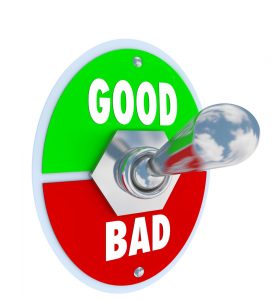 How many unread emails do you have in your inbox? 300? 800? Or maybe, if you are like me and are on countless mailing lists, 2,644?
How many unread emails do you have in your inbox? 300? 800? Or maybe, if you are like me and are on countless mailing lists, 2,644?
We get a TON of emails every day, and a lot of them are never opened. People are inundated with boatloads of information – more than ever before in history! But we don’t have more time to soak it all in. The chances of your email being ignored are pretty high – unless of course, you have a rockin’ sockin’ subject line.
Your subject line is your first (and maybe your last) impression on users. In many ways, your email subject line is more important than your email body. After all, a great newsletter is worthless if it never sees the light of day.
There are a few different schools of thought when it comes to creating slam dunk subject lines. We’ll be covering 9 different types of effective email subject lines and sprinkling examples throughout.

 Pre Launch App Marketing is an area of expertise in itself. With more than 1000 apps launched each day both on the App Store and Google Play Store, the clutter and the noise is increasingly challenging to beat. Very often, even innovative apps with clear value add and tremendous utility gets ignored posing the need to market apps well.
Pre Launch App Marketing is an area of expertise in itself. With more than 1000 apps launched each day both on the App Store and Google Play Store, the clutter and the noise is increasingly challenging to beat. Very often, even innovative apps with clear value add and tremendous utility gets ignored posing the need to market apps well. It’s been more than half a century since Philip Kotler first published his principles of marketing, which has defined the practice of millions of professionals worldwide ever since. It’s no stretch to say that before Kotler, there was no marketing profession.
It’s been more than half a century since Philip Kotler first published his principles of marketing, which has defined the practice of millions of professionals worldwide ever since. It’s no stretch to say that before Kotler, there was no marketing profession. Culture is crucial when it comes to understanding the needs and behaviours of an individual. Throughout his existence, an individual will be influenced by his family, his friends, his cultural environment or society that will “teach” him values, preferences as well as common behaviours to their own culture.
Culture is crucial when it comes to understanding the needs and behaviours of an individual. Throughout his existence, an individual will be influenced by his family, his friends, his cultural environment or society that will “teach” him values, preferences as well as common behaviours to their own culture. There is a holy grail in the workplace, but like the one in the popular book and movie “The Di Vinci Code,” it’s not exactly what you’d expect. In any company, the products and the location are important.
There is a holy grail in the workplace, but like the one in the popular book and movie “The Di Vinci Code,” it’s not exactly what you’d expect. In any company, the products and the location are important. Sometimes, bad publicity is inevitable. Even when you and your organisation behave responsibly, you always run the small risk of an unexpected PR disaster. In the information age, bad publicity can reach the masses before you can even mount a defense.
Sometimes, bad publicity is inevitable. Even when you and your organisation behave responsibly, you always run the small risk of an unexpected PR disaster. In the information age, bad publicity can reach the masses before you can even mount a defense. Do you want to drink a venti double mocha skinny chai latte? Do you even know what that is? I don’t. We found in a customer survey that 70% of shoppers were also confused by the choices (and their obscure names) on store’s café menu.
Do you want to drink a venti double mocha skinny chai latte? Do you even know what that is? I don’t. We found in a customer survey that 70% of shoppers were also confused by the choices (and their obscure names) on store’s café menu. Packaging plays an important role as a medium in the marketing mix, in promotion campaigns, as a pricing criterion, in defining the character of new products, as a setter of trends and as an instrument to create brand identity and shelf impact in all product groups.
Packaging plays an important role as a medium in the marketing mix, in promotion campaigns, as a pricing criterion, in defining the character of new products, as a setter of trends and as an instrument to create brand identity and shelf impact in all product groups. Brand names, logos, and slogans are integral parts of any company’s marketing message. All have the same aim: to make consumers react positively to a product or a business. Our research shows, however, that many slogans backfire—for example, causing consumers to spend money when they’re told they can save, or vice versa.
Brand names, logos, and slogans are integral parts of any company’s marketing message. All have the same aim: to make consumers react positively to a product or a business. Our research shows, however, that many slogans backfire—for example, causing consumers to spend money when they’re told they can save, or vice versa. In today’s image-conscious society, everything is judged first by how it looks. Rebranding has become the “cure du jour” for everything from sluggish sales to increased competition and outdated products. So how well do these makeovers work?
In today’s image-conscious society, everything is judged first by how it looks. Rebranding has become the “cure du jour” for everything from sluggish sales to increased competition and outdated products. So how well do these makeovers work? Marketers surpass consumers in their daily use of e-mail, texting and social platforms. A whopping 93 percent of marketers have made a purchase as a direct result of an e-mail marketing message, while only 49 percent of online consumers have done so.
Marketers surpass consumers in their daily use of e-mail, texting and social platforms. A whopping 93 percent of marketers have made a purchase as a direct result of an e-mail marketing message, while only 49 percent of online consumers have done so. So you want your website to make you look big. More power to you. But the business experts I talked to recently say small is cool with customers, too.
So you want your website to make you look big. More power to you. But the business experts I talked to recently say small is cool with customers, too.